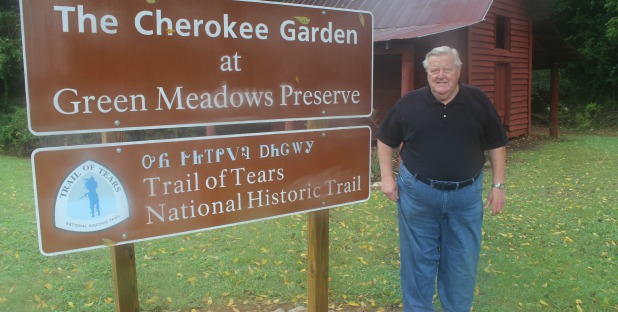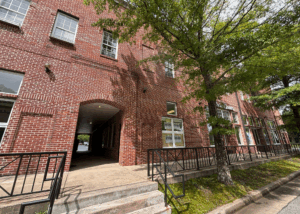Learn about native plants that were historically significant to the Cherokee people from a native plant expert at a free program Nov. 5 at Newnan-Coweta Historical Society’s McRitchie-Hollis Museum.
The program is being presented to help mark Native American Heritage Month. Tony Harris, a Cherokee Nation citizen, will discuss ethnobotany: the scientific study of the traditional knowledge and customs of a people concerning plants and their medical, religious, and other uses. The talk will be held at 7 p.m.
Harris, a Cobb County Master Gardener, has been instrumental in establishing the Cherokee Garden at Green Meadows Preserve in an effort to educate the community about the native plants that were important to the Cherokee — about 600 plants were used for medicine, food, weapons, crafts, lodging, canoes and basketry.
A number of the plants were thought to have medicinal properties and the Cherokee would steep or boil them into a tea, infusion or poultice.
Bloodroot, for example, can be made into a poultice that keeps away flies and bees. Mayapple, also called Indian Apple, is a cathartic that can induce vomiting. It also will cure worms, according to Cherokee traditional practice, but care must be taken. The roots and leaves are poisonous. Wild ginger, called “mule’s footprint” for the shape of its leaves, was used in almost half of Cherokee medicines. It was frequently taken as a tonic to bolster endurance before harvest work began. Willow bark is the forerunner of aspirin.
Wild onions, of the allium family, are just plain tasty additions to eggs and soups and are especially valuable in removing the gamey taste of wild meat. They were used by the Cherokee as a tonic to cleanse their systems, ease colic and croup, and lessen the effects of colds and sore throats. To this day Oklahoma celebrates them in an annual Wild Onion Festival. Another tasty plant is the sunchoke or Jerusalem artichoke. Harris recommends eating the tubers as you would potatoes, and he defies anyone to tell the difference in taste or texture between sunchokes and water chestnuts.
Also useful for colds and flu, rabbit tobacco, or Sweet Everlasting — and not a tobacco — is an even better astringent than witch hazel. (If you don’t happen to have a cold, it doubles as a room air freshener!) Nicotiana rustica, unlike the rabbit tobacco farm children liked to “smoke,” is so highly narcotic that it is forbidden, having a nicotine content as high as 9 percent, compared to tobacco’s 1 percent.
Historically, the Cherokee nation was decimated twice by smallpox. An infusion of the inner bark of the black walnut tree was developed as an antidote. Too, it could be chewed for toothache — but carefully. The black walnut can be poisonous and, in fact, limits what can be planted near it. But the tree is worth cultivation: the leaves make a green dye and the husks, brown. An infusion of those same husks can be spread in the water to stun fish for easy catching.
Rattlesnake master does exactly what it says: it repels snakes and can be used as a snakebite remedy. Chew it, apply to the wound, and swallow a bit. It is said to inhibit cancer as well. Also used for snakebite was cinnamon fern, which can additionally be used to ease arthritis. Fiddleheads can be cooked as a dish that Harris says tastes like a combination of broccoli, asparagus and artichoke.
The Cherokee Garden at Green Meadows Preserve in Cobb County was dedicated Aug. 29. The garden, which is open to the public, was the brainchild of Tony and Carra Harris of Marietta.
Tony Harris is a Cherokee Nation citizen, a member of the Cobb County Master Gardeners and vice president of the Georgia Chapter of the Trail of Tears Association. Earlier this year, the Cherokee Garden became a certified interpretive site on the Trail of Tears National Historic Trail.
The garden features plants and trees that the Cherokee used for medicine, food, tools, weapons, shelter and ceremonial purposes prior to the Trail of Tears. The plants will eventually be marked with their Cherokee and English names. Volunteers from the Cobb County Master Gardeners and members of the Georgia Native Plant Society maintain the property.
Green Meadows Preserve is part of the Cobb County Parks System. It is located at 3780 Dallas Highway, Powder Springs, Ga. The park is free and open to the public. For additional information, email [email protected] or call 770-425-2411.
The McRitchie-Hollis Museum, one of three facilities operated by Newnan-Coweta Historical Society, is at 74 Jackson Street just north of downtown Newnan. The museum is adjacent to the recently-opened University of West Georgia Newnan Center campus. There is ample free parking behind the museum with entrances off Clark Street. For details call the museum office at 770-251-0207.












Leave a Comment
You must be logged in to post a comment.